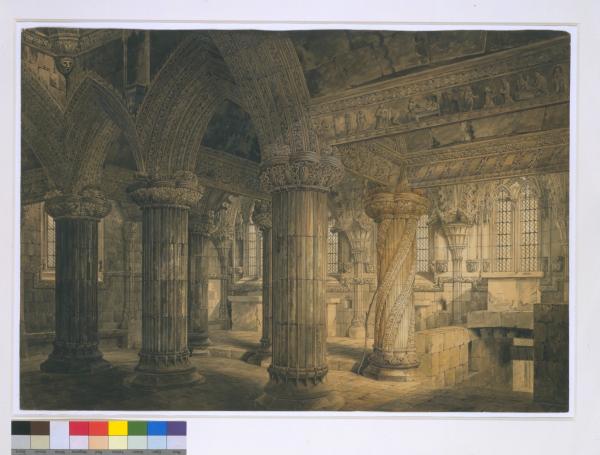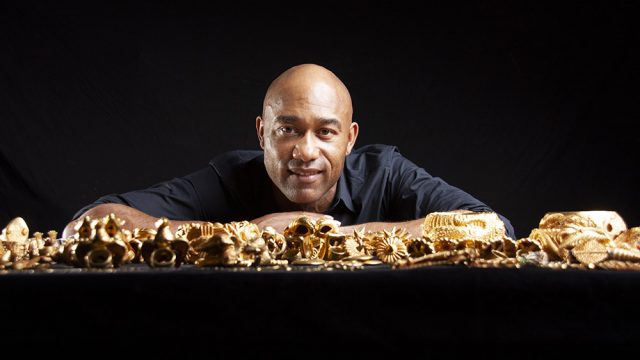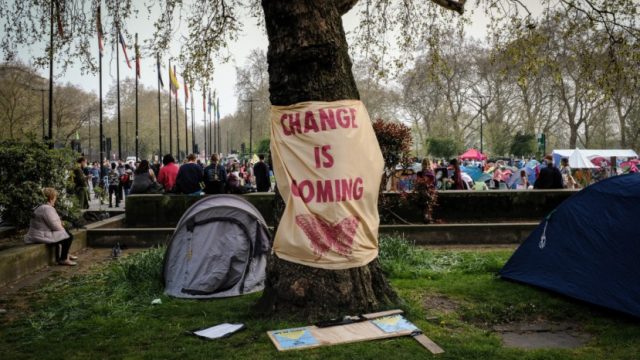As an intern at the V&A my main task has been locating photographs of the original sculpture that has been cast and displayed in our magnificent Cast Courts. I have scoured the V&A, starting in the Sculpture section’s image bank and then moving on to the seemingly bottomless pit of the Prints and Drawing Study Room’s resources. We hope that the photos may eventually be uploaded on to the V&A’s website to reside by the photographs of the casts. It has been a repetitive but thankfully interesting task: having familiarised myself with the objects in the Cast Courts it has been fascinating to learn more about the original sculpture.
Focussing on the objects in gallery 46A I have come across some wonderful photographs of the original sculpture in many different settings: from the forum in Rome to Westminster Hall, from Notre Dame in Paris to the graveyard of Kirk Braddon on the Isle of Man. Some of the photos give a real sense of place to the original sculpture.
Seeing the original of the V&A’s cast of a sandstone cross in the open Irish countryside of County Louth I was struck by how big the cross was in comparison to the surrounding tombstones.
Something that is perhaps lost in the Cast Courts where the cross is dwarfed by Trajan’s column.
Here is Hubert Gerhard’s 16th century fountain with a bronze figure of Perseus in the ‘Grotto Courtyard’ of the Residenz in Munich.

Some of the most interesting photographs I found showed sculptures that were presented very differently in their original setting to how they are in the Cast Courts. The V&A’s casts of the reliefs adorning the Fontaine des Innocents in Paris are hung side by side on the wall in the Cast Courts.
Seeing, in a photograph by Jean-Eugène-Auguste Atget, the reliefs adorning the four sides of the Fontaine des Innocents unifies them in one structure and again highlights the scale of the original fountain.
The photographs act as a reminder that, while new conversations between objects are created in the Cast Courts, the sculpture is very much out of context – true of most museum objects, but underlined by the sheer size of many of the objects in the Cast Courts.
My research also unearthed mystical tales of the original sculpture, carving a newly discovered rich history for the casts displayed at the V&A.The plaster cast of the ‘Apprentice’ or ‘Prentice Pillar’ from Roslyn chapel, Midlothian, Scotland is one example.
The cast was commissioned by the V&A in 1871 at a cost of £76 5s and was made at the South Kensington Museum. Although I couldn’t find a photograph, the V&A does hold two paintings showing the ‘Prentice Pillar’ in its original setting, respectively by George Shepherd and David Roberts.

![Entrance to the crypt, Roslin Chapel, David Roberts, 1843, Museum no. FA.174[O]](https://www.vam.ac.uk/blog/wp-content/uploads/2014/06/9_0.jpg)
One of my most interesting discoveries was a discrepancy between one of the V&A’s casts and the original. Comparing a photograph of a stone relief depicting the Raising of Lazarus in Chichester Cathedral with the V&As plaster cast of the same relief I noticed a difference.
If you look at the reliefs together you can see that the V&A’s cast looks a little like a jumbled jigsaw puzzle. After some investigation (tapping into the expert knowledge of Sculpture curator Glyn Davies) I discovered that the relief in Chichester Cathedral was moved and reassembled incorrectly, remaining like that for almost 60 years from 1829 to 1886. The V&A’s cast was made at some point in this period and remains as a lasting reminder of the mistake of a long gone mason working at Chichester Cathedral, who unwittingly gave Jesus a third arm!
Researching photographs of the sculpture that is cast and preserved in the V&A underlined for me what a valuable resource the Cast Courts are for artists, students and the public in general. While it would be fantastic if we all had the opportunity to draw David in Florence, study the Puerta de la Gloria in Galicia, Spain or wander the churchyard of Monasterboice in Louth, it’s also as fantastic that we can walk into the V&A and have them all on our doorstep.

